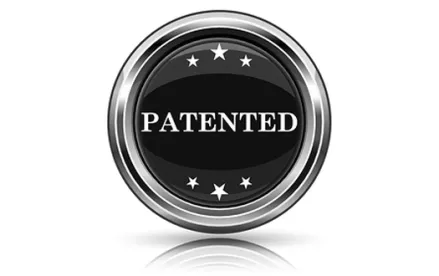In its Final Written Decisions in two related cases, the Board granted-in-part Patent Owner’s Motions to Amend U.S. Patent Nos. 8,312,226 B2 and 8,370,583 B2.
In IPR2013-00402, the Board granted Patent Owner’s Motion to the extent it requested cancellation of claims 1-12 of the ’226 patent, and with respect to proposed substitute claims 13 and 15. The Board, however, denied Patent Owner’s motion with respect to proposed substitute claims 14 and 16-18. Similarly, in IPR2013-00403, the Board granted Patent Owner’s Motion to the extent it requested cancellation of claims 1–27 of the ’583 patent, and with respect to proposed substitute claims 28 and 30. The Board, however, denied Patent Owner’s motion with respect to proposed substitute claims 29 and 31–33.
The ’226 and ’583 patents generally relate to a network memory system.
Notably, Patent Owner did not file a Patent Owner Response to either Petition, and its requests to cancel the challenged claims were not contingent on the claims being determined unpatentable.
The Board began by reviewing the applicable law. As the moving party, Patent Owner bears the burden of proof to establish that it is entitled to the relief requested, i.e., entry of the proposed amendments. Thus, Patent Owner must demonstrate, by a preponderance of the evidence, the patentability of the proposed substitute claims. In addition, in an inter partes review, proposed substitute claims “may not enlarge the scope of the claims of the patent.” The Motion to Amend must show, for each amended claim, the written description support in the original disclosure and in any earlier-filed disclosure for which benefit of the filing date is sought. It also must include proposed claim constructions for new terms.
After concluding that the proposed substitute claims did not enlarge the scope of the claims and that there was written description support for the amended claims, the Board accepted Patent Owner’s proposed claim constructions and incorporated its previous analysis of several claim terms.
The Board then analyzed the proposed substitute claims. With respect to proposed claims 13 and 15 in IPR2013-00402 and proposed claims 28 and 30 in IPR2013-00403, the Board concluded that “Patent Owner’s explanation as to why the proposed substitute claims are different from pre-existing data de-duplication systems is persuasive and is supported by the evidence of record.” The Board considered the arguments of Petitioner but concluded that it did not address one of the limitations and that, as a result, Patent Owner’s “assertions regarding key aspects of the prior art . . . essentially are unrebutted.” The Board also rejected Petitioner’s argument that Patent Owner should have provided a declaration from a technical expert to support its patentability argument as well as evidence concerning the level of “ordinary” skill in the art. The Board determined that, under the circumstances of this case, such evidence was not necessary. Accordingly, the Board granted the Motions to Amend with respect to these claims.
Next, the Board considered the patentability of the other proposed substitute claims.
With respect to proposed claims 14 and 16 in IPR2013-00402 and proposed claims 29 and 31 in IPR2013-00403, the Board noted that they depend from the proposed substitute claims discussed above. To demonstrate a patentable distinction over a parent proposed substitute claim, the Board assumes the parent claims to be prior art. Here, the Board determined that the Patent Owner did not sufficiently explain “why storing an additional copy [of a portion of data] would have been non-obvious, assuming the [parent proposed substitute claims] to be prior art.” After considering each of Patent Owner’s arguments, the Board concluded that Patent owner had not shown a patentable distinction between the proposed substitute claims and their parent proposed substitute claims and also had not shown any other special circumstances for adding the “another copy” limitation to the proposed substitute claims. The Board determined that these proposed substitute claims thus “amount to a second proposed substitute claim (in addition to the parent proposed substitute claims . . .” for the challenged claims and that Patent Owner had not “demonstrated a sufficient need for exceeding the presumption that only one substitute claim is needed to replace a challenged claim.” Accordingly, the Board denied the Motions to Amend with respect to these claims.
Finally, the Board determined that Patent Owner did not make a sufficient showing that proposed substitute claims 17 and 18 in IPR2013-00402 and proposed claims 32 and 33 in IPR2013-00403 are patent-eligible under 35 U.S.C. § 101 because they encompass both transitory and non-transitory media. The Board also determined that Patent Owner did not meet its burden to show patentability of claims 32 and 33 because it did not provide a proposed claim interpretation for certain claims that were expressed in means-plus-function format. Accordingly, the Board denied the Motions to Amend with respect to these claims.
Riverbed Technology, Inc. v. Silver Peak Systems, Inc., IPR2013-00402, IPR2013-00403
Paper 35, 33: Final Written Decision
Dated: December 30, 2014
Patents: 8,312,226 B2; 8,370,583 B2
Before: Denise M. Pothier, Justin T. Arbes, and Hyun J. Jung
Written by: Arbes



 />i
/>i

